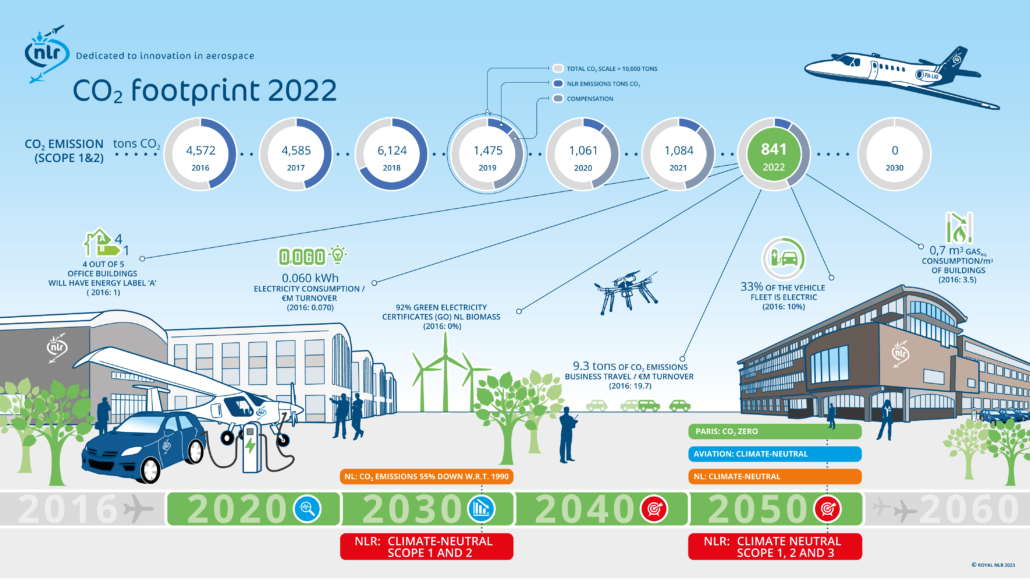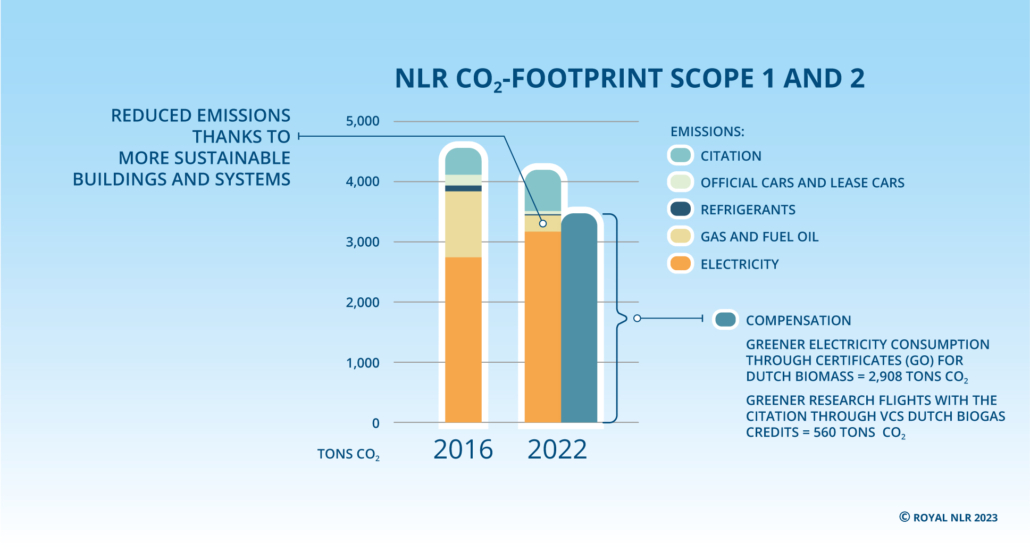NLR 2030 ambition
NLR is one step closer to achieving its goal of being climate-neutral by 2030 for scope 1 (emissions from its own activities) and scope 2 (indirect emissions associated with the purchase of electricity). The net CO2 emissions decreased by 22% in 2022 compared to the previous year, reaching 841 tonnes. This reduction was driven by decreases in emissions from electricity consumption, building heating, and business travel using NLR vehicles. Furthermore, the emissions from flights using our Citation aircraft have been largely offset.
NLR CO2 footprint 2022 and goals
Electricity
The amount of electricity consumed decreased by 7% to 6,000 MWh. The reduction in consumption primarily occurred in Marknesse. Fluctuations in facility usage might be the main contributing factor, which could be better understood in the future through analysis of data from the interim meters installed in 2022. Furthermore, various adjustments to climate systems have been implemented, resulting in less frequent switching of heat pumps and significant energy savings. 92% of the emissions from electricity consumption have been offset through the purchase of Guarantees of Origin (GO) from NL Biomass, via HVC.
Building heating
The consumption for building heating has decreased by 27.5% to 190,000 m3 gas equivalent. Half of this reduction is attributed to replacing an old, oil-fired heating system with modern gas boilers. The remaining decrease is due to warmer weather compared to 2021.
NLR CO2 Footprint Details for 2022
Research flights
Kerosene consumption from research flights using the Cessna Citation has increased by 40% to 212,000 litres. This increase is linked to more flights conducted for research purposes. The majority of emissions from these flights have been offset through the purchase of VCS Dutch Biogas CO2 Credits, via the Climate Neutral Group. NLR research flights resulted in 680 tonnes of CO2 emissions, 82% of which have been compensated.
Business travel using NLR vehicles
Less driving has occurred with NLR service and lease vehicles using fossil fuels. The use of electrically powered NLR cars has more than doubled. It’s important to note that the majority of business travel (over 90%) falls under scope 3, which includes emissions from activities of other parties in the value chain. The total business kilometres travelled using passenger planes, service and private cars, and public transport amounts to 6.1 million kilometres. This is approximately 2.5 times more than in 2021. As a result, emissions have increased by 127% to 931 tonnes of CO2. The emissions now account for roughly two-thirds of those in 2019.
In addition to the above aspects, refrigerants also play a role, albeit a limited one. Refrigerants are released during research involving cooling systems and due to leakage from climate installations. The impact of refrigerant emissions can be up to 2,500 times greater than that of CO2 emissions. The emissions from refrigerants amounted to 17 tonnes of CO2 equivalent, which is less than 0.5% of the total emissions.


